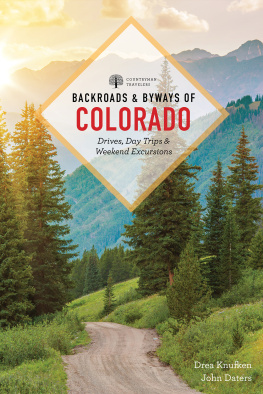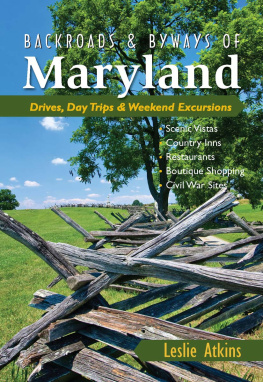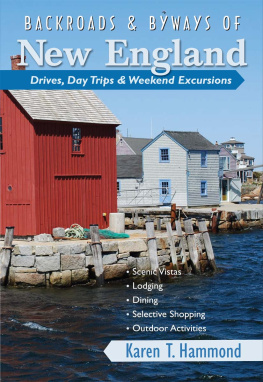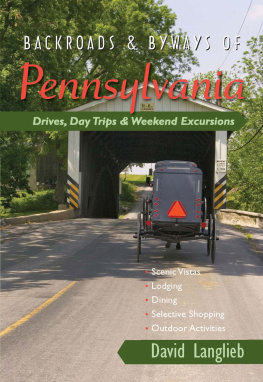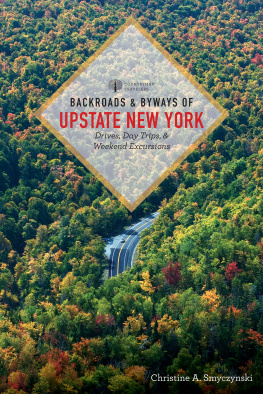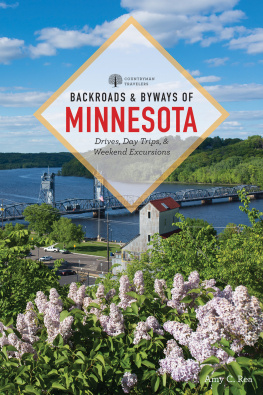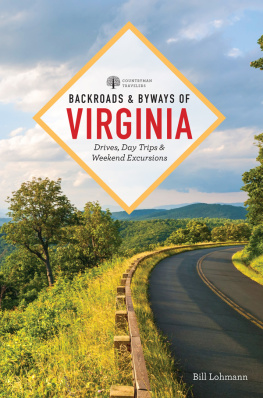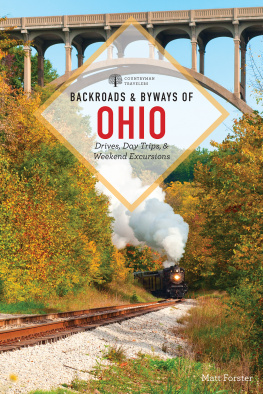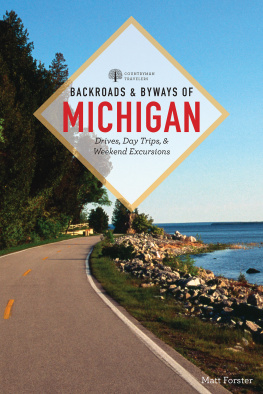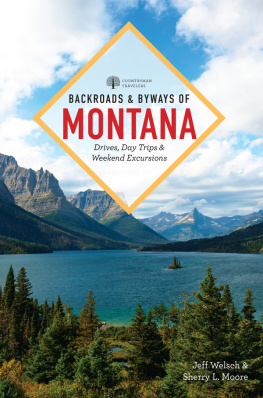Contents
Guide


HEATHER_HEMSTREET/ISTOCKPHOTO.COM
BACKROADS & BYWAYS OF
COLORADO
Drives, Day Trips &
Weekend Excursions
THIRD EDITION
DREA KNUFKEN & JOHN DATERS

THE COUNTRYMAN PRESS
A Division of W. W. Norton & Company
Independent Publishers Since 1923
Copyright 2020, 2013, 2008 by The Countryman Press
Maps by World Sites Atlas and Erin Greb Cartography copyright The Countryman Press
All rights reserved
Printed in the United States of America
For information about permission to reproduce selections from this book, write to
Permissions, The Countryman Press, 500 Fifth Avenue, New York, NY 10110
For information about special discounts for bulk purchases, please contact
W. W. Norton Special Sales at specialsales@wwnorton.com or 800-233-4830
Manufacturing by Versa Press
Book series design by Chris Welch
Production manager: Gwen Cullen
The Countryman Press
www.countrymanpress.com
A division of W. W. Norton & Company, Inc.
500 Fifth Avenue, New York, NY 10110
www.wwnorton.com
978-1-68268-506-8 (pbk.)
10 9 8 7 6 5 4 3 2 1
My thanks to Kim Grant for giving me this opportunity years ago.
To the many Coloradans I met during my travels, who shared a passion for
and devotion to this state. And to Seth, my partner, my rock, who reminds
me every day that beauty and love are simple and always available. D.K.
This book is dedicated to Beth, whom I love without reservation.
Without you, this edition would never have been finished. J.D.

Contents
Introduction
C olorados wide-open skies, rich history, and fluorescent peaks under high-altitude sunrises have held people captive from as early as the Ice Age. Archaeological digs just outside of Fort Collins, conducted in 1932, found some of the states earliest human residents, who no doubt marveled at the regions landscapes. Scientific findings from the digs date the states first human inhabitants at roughly 9000 BCE. Decades later, more similarly aged sites were uncovered along the Front Range. While the area between Fort Collins and Pueblo uncovered some of the earliest people, perhaps the best-understood prehistoric settlers came years later to southwest Colorado. These native people settled in the region around 1500 BCE. Sites found near modern-day Mesa Verde uncovered a wealth and variety of well-crafted woven artifacts, leading scientists to dub this culture the Basketmakers. For the most part, these early residents were hunter-gatherers with relatively rudimentary farming and ranching techniques. However, sometime between CE 1 and 750, the Basketmakers began to show evidence of well-established farming techniques and the construction of architecturally improved dwellingssuch as pit houses. Because less time was devoted to basic survival needs, these technological progressions allowed for an increase in leisure time within the community, allowing the settlers to achieve such innovations as utilitarian and artistically rendered pottery. Its believed that this turning point in technological progression actually evidences the coming of a new age within this society. These original settlers had progressed beyond simple basketmakers to become a significantly distinct people. We know the name for this new culture not through their own language but through that of their future neighbors, the Navajo. The Navajo christened these people Anasazi , a word meaning the ancestors of our enemies or ancient people who are not us. Based on oral histories and genealogical studies, todays Pueblo are the closest descendants of the Anasazi. While the name Anasazi is still prevalent, todays descendants prefer that their forebears be referred to as Ancestral Puebloans, because the Navajo name is considered mildly derogatoryand besides, being named by a nonrelated tribe may also be construed as a cultural embarrassment. During their height, its estimated that thousands of Ancestral Puebloan families may have lived in todays southwest Colorado.

ALPINE TUNDRA AT ROCKY MOUNTAIN NATIONAL PARK
Unfortunately, the Ancestral Puebloans were victims of circumstance and their own success. Through farming, these native people pulled all the nutrients from the soil, making crops continually harder to grow. Coupled with unseasonal droughts and environment- and population-related natural resource decline, the first settlers of todays Colorado were forced to migrate to what is now Arizona and New Mexico. The Pueblo in both of those states can trace their roots to Ancestral Puebloans, who first staked a claim in Colorado.
Not too long after their departure, the stalwart and nomadic Ute and Navajo frequented the area, leaving behind evidence of their transitory visits with temporary shelters, long-since abandoned. Centuries later, in 1776, the Spanish friars Atanasio Dominguez and Silvestre Velez de Escalante would be the first nonAmerican Indians to explore and record the areas various archaeological sites, geological features, and natural resources. Todays visitors to the region are treated to this exceptional historical record by the Canyon of the Ancients Visitor Center and Museum and the Canyons of the Ancients National Monument, both operated by the Bureau of Land Management. Perhaps the best-known location showcasing much of the regions early history is Mesa Verde National Parkone of the states most-visited national parks, as well as among the nations most well known.
Centuries after the Ancient Puebloans left, around CE 1500, the nomadic Ute moved into the southern Rockies. Plains American Indians later settled in eastern Colorado, the Arapaho and Cheyenne in the northeastern plains, the Shoshoni in the northwestern part of the state, and the Comanche and Kiowa in the southeastern plains. The tribes comprised a diverse demographic that traded, communicated, bonded, and foughtsometimes migrating to new territories, other times defending home turfs.
This thriving American Indian world started to change when European explorers arrived in the area in the mid-1500s. They were searching for something: The Spanish sought gold, the Pacific Ocean, and mythical cities; the French came looking for new territory. The last people to scout the territory were also its final settlers. In 1803 the brand-new United States claimed rights to eastern Colorado through the Louisiana Purchase. Newly minted American lieutenants and majors arrived with the intent to claim the land. They renamed the landscape in their own language, prospected for resources, and took ownership of American Indian territories.
Local American Indian tribes had mixed reactions to the new settlers. Some fought hard to protect their land. Others cooperated with the settlers, hoping to gain advantage over feuding tribes. Still others had mixed reactions, alternately fighting and cooperating with the settlers. One visionary Ute, Chief Ouray, saw that the turmoil could have no positive outcome for his people. He advocated for diplomacy and peaceful resolution on both sides. Unfortunately, despite his courage, a peaceful outcome never happened. One of Colorados most beautiful mountain towns is his namesake.

